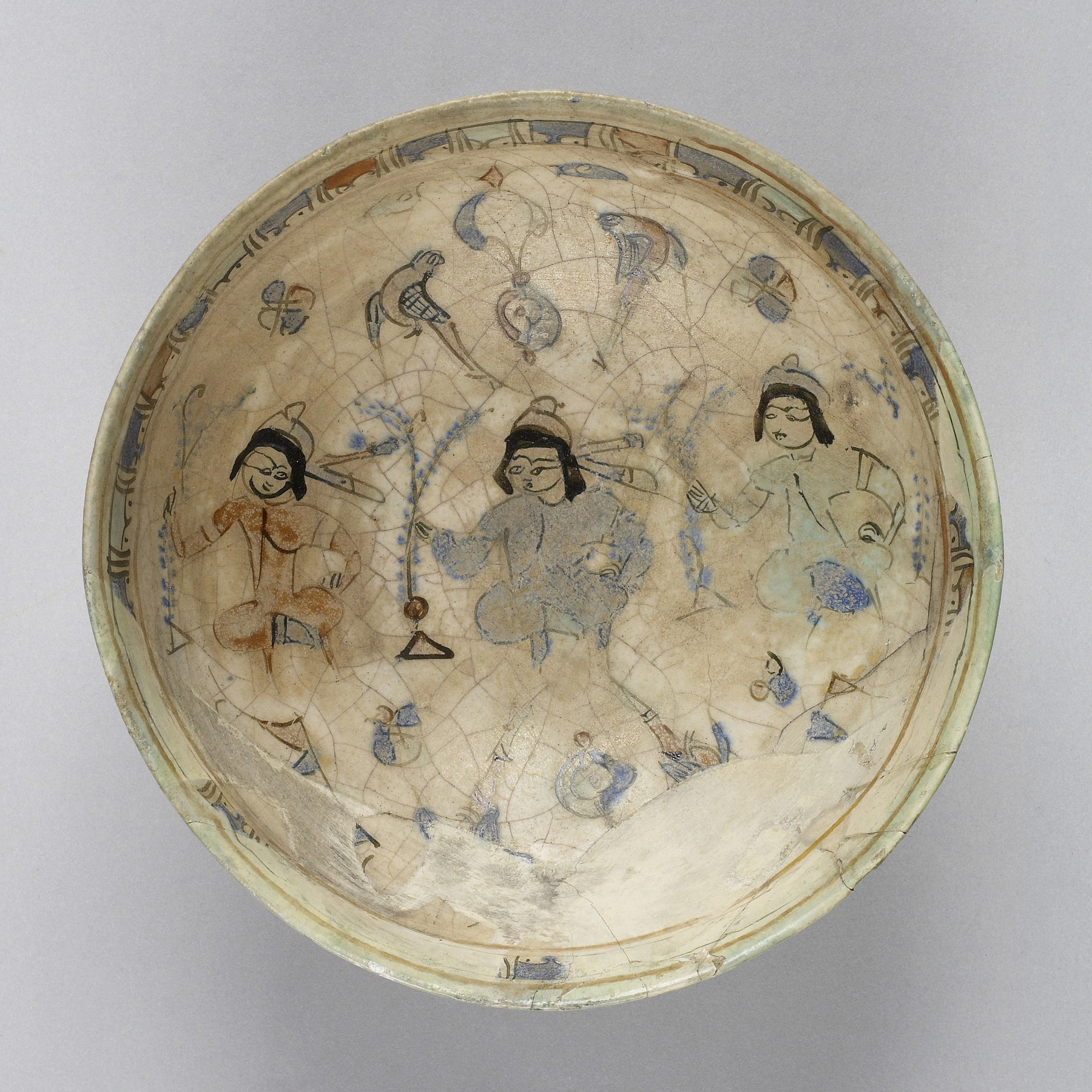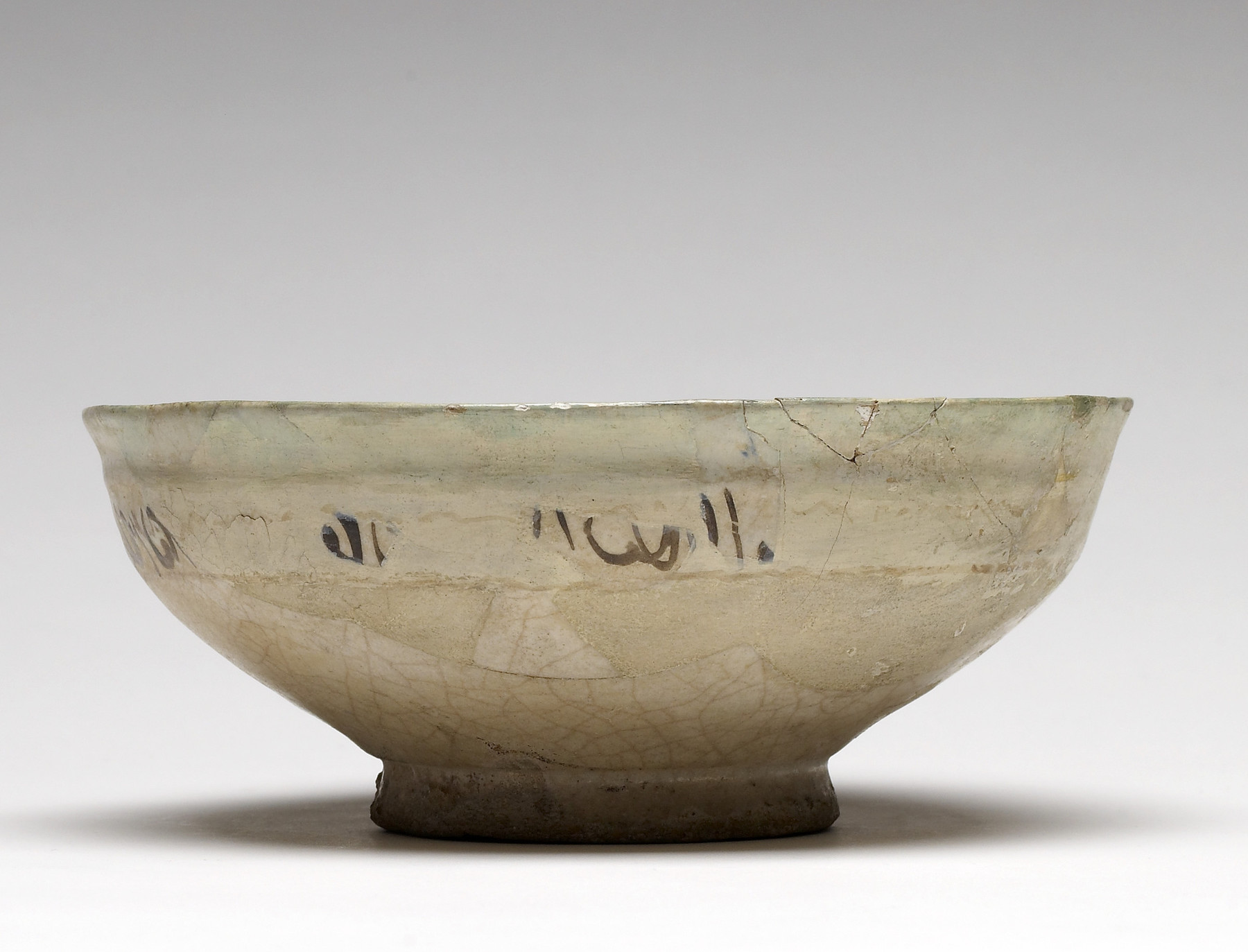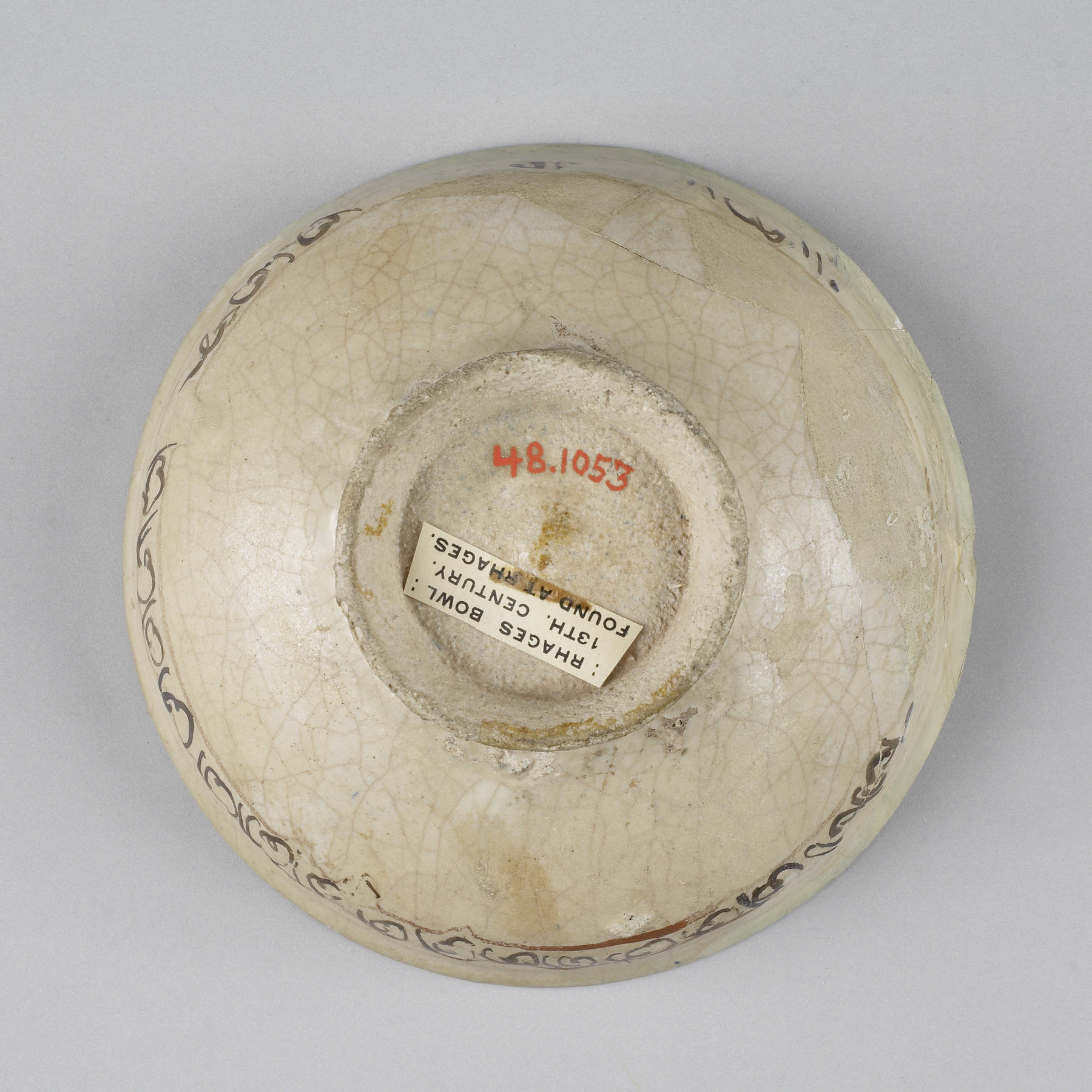Bowl with Seated figures and Birds
Mina’i is a modern collectors’ term for ceramics made in Iran during the late 12th to early 13th centuries. The term mina’i, translates as “enamelled” in Persian, designating the colored glass pigments used to paint detailed figural decoration on vessels or tiles, which were then fixed on the ceramic base by multiple firings. The use of a wide range of colors, including turquoise, red, green, purple, and black, also led these types of ceramics to be called by the Persian term “haft rang,” or “seven colors.”
Mina’i ware scenes often depict courtly pursuits, such as feasting, fighting, or poetry and music performances. These colorful compositions created complex narrative scenes which paralleled manuscript painting These princely activities were frequently set within a garden setting like the one seen here, which includes tall plants and birds flying above. The kufic inscription on the interior rim, while partially erased, appears to be a pseudo-inscription. The cursive naskhi inscription on the outside of the bowl also appears to be the repetition of the same word.
Provenance
Provenance (from the French provenir, 'to come from/forth') is the chronology of the ownership, custody, or location of a historical object.
Dikran Kelekian, New York and Paris, [date and mode of acquisition unknown]; Henry Walters, Baltimore, 1928, by purchase; Walters Art Museum, 1931, by bequest.
Conservation
| Date | Description | Narrative |
|---|---|---|
| 6/22/1957 | Treatment | repaired |
Geographies
Iran (Place of Origin)
Measurements
Overall: 2 5/8 x 6 1/8 in. (6.6 x 15.6 cm)
Credit Line
Acquired by Henry Walters, 1928
Location in Museum
Not on view
Accession Number
In libraries, galleries, museums, and archives, an accession number is a unique identifier assigned to each object in the collection.
In libraries, galleries, museums, and archives, an accession number is a unique identifier assigned to each object in the collection.
48.1053












